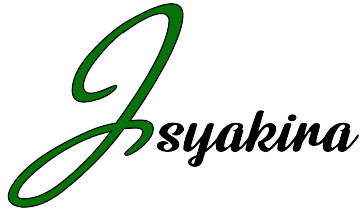The journey of mixed cat litter from concept to shelf involves a detailed and methodical process that combines creativity, technology, and logistics. Manufacturers play a crucial role in ensuring that the final product meets high standards of quality, performance, and environmental responsibility. This blog will guide you through the various stages of this journey, highlighting the efforts and processes involved in bringing mixed cat litter from the drawing board to your home.
1. Product Development and Conceptualization
Market Research and Consumer Insights
- Identifying Needs: The journey begins with understanding the needs and preferences of pet owners. Manufacturers conduct market research to identify key features that consumers want in cat litter, such as clumping ability, odor control, and environmental sustainability.
- Trend Analysis: Manufacturers analyze current trends in the pet care industry to ensure their products align with consumer demands and expectations. This includes exploring eco-friendly options, new materials, and innovative features.
Formulation and Design
- Ingredient Selection: Based on research, manufacturers select the materials that will be used in the mixed cat litter. This may include a blend of clay, biodegradable materials, and other components designed to enhance performance.
- Prototype Development: Manufacturers create prototypes to test various formulations. This stage involves blending different ingredients to achieve the desired properties, such as clumping strength, absorbency, and odor control.
2. Production Planning and Setup
Facility Preparation
- Production Line Design: Setting up a production facility involves designing and configuring the production line to accommodate the specific needs of Mixed cat litter manufacturer. This includes installing blending equipment, granulators, and packaging machinery.
- Quality Control Systems: Manufacturers establish quality control systems to monitor and ensure the consistency and quality of the product throughout the production process. This includes implementing testing protocols and establishing benchmarks for performance.
Raw Material Sourcing
- Supplier Selection: Manufacturers establish relationships with suppliers to source high-quality raw materials. This involves evaluating suppliers based on their ability to provide consistent and reliable materials that meet the required specifications.
- Material Testing: Before production begins, raw materials undergo testing to ensure they meet quality standards. This includes assessing properties such as moisture content, particle size, and chemical composition.
3. Manufacturing Process
Blending and Formulation
- Blending Techniques: The selected materials are blended using advanced technology to ensure a uniform mix. Equipment such as ribbon blenders, paddle blenders, and rotary drum blenders are used to achieve the desired consistency.
- Granulation and Conditioning: Some ingredients may require granulation to form uniform pellets or granules. The blended mixture is conditioned to achieve the optimal texture and performance before moving on to the next stage.
Quality Control
- Performance Testing: The mixed cat litter is subjected to various performance tests to evaluate its clumping ability, absorbency, and odor control. These tests help ensure that the product meets the manufacturer’s quality standards.
- Safety Checks: Manufacturers conduct safety checks to ensure that the product is free from contaminants and allergens. This includes monitoring dust levels and ensuring compliance with regulatory standards.
4. Packaging and Labeling
Packaging Solutions
- Design and Materials: The packaging design is crucial for protecting the cat litter during transport and storage. Manufacturers use materials that prevent contamination and maintain product freshness. Sustainable packaging options are increasingly being adopted to reduce environmental impact.
- Labeling: Packaging includes labeling that provides important information about the product, such as ingredients, usage instructions, and environmental benefits. Effective labeling helps consumers make informed choices and enhances brand visibility.
Distribution and Logistics
- Warehousing: Finished products are stored in warehouses before distribution. Proper warehousing practices ensure that the litter remains in optimal conditions, preserving its quality until it reaches retailers.
- Supply Chain Coordination: Manufacturers coordinate with distributors and retailers to manage the supply chain efficiently. This involves scheduling deliveries, managing inventory, and ensuring timely availability of the product in stores.
5. Consumer Feedback and Continuous Improvement
Gathering Feedback
- Consumer Reviews: Once the product is on the market, manufacturers collect feedback from consumers to assess satisfaction and identify areas for improvement. This feedback can come from product reviews, surveys, and direct customer interactions.
- Market Trends: Manufacturers stay informed about evolving market trends and consumer preferences to continuously adapt their products. This includes monitoring competitor products and innovations in the industry.
Continuous Improvement
- Product Refinement: Based on feedback and performance data, manufacturers may make adjustments to the formulation or production process. Continuous improvement efforts help enhance product quality and address any issues that arise.
- Innovation: Manufacturers invest in research and development to explore new materials, technologies, and formulations. Innovation helps drive product advancements and keeps the brand competitive in the market.
6. Sustainability and Ethical Practices
Environmental Responsibility
- Sustainable Sourcing: Many manufacturers are committed to sourcing materials sustainably. This includes using renewable resources and minimizing environmental impact through responsible production practices.
- Waste Reduction: Factories implement waste reduction strategies to minimize the environmental footprint of their operations. This includes recycling by-products, reducing energy consumption, and optimizing resource use.
Ethical Practices
- Fair Labor Practices: Manufacturers ensure that their production facilities adhere to ethical labor practices, providing fair wages and safe working conditions for employees.
- Community Engagement: Some manufacturers engage in community initiatives and support charitable causes related to animal welfare and environmental conservation.
Conclusion
The journey of mixed cat litter from concept to shelf is a complex process that involves multiple stages of development, production, and distribution. Manufacturers play a crucial role in ensuring that the final product meets high standards of quality, performance, and environmental responsibility.
By understanding the steps involved in bringing mixed cat litter to market, consumers can appreciate the effort and expertise required to deliver a product that meets their needs and expectations. As the industry continues to evolve, manufacturers will continue to innovate and adapt, driving advancements in product quality and sustainability.





